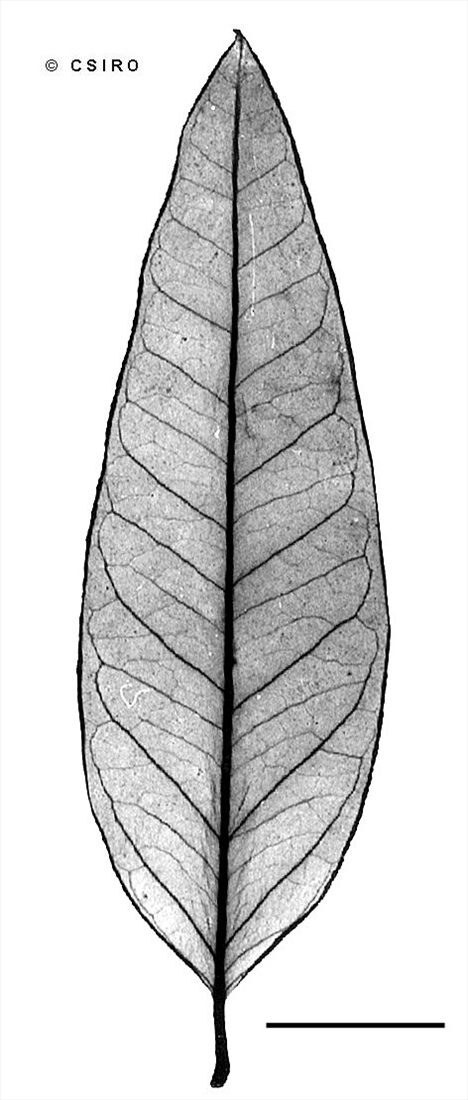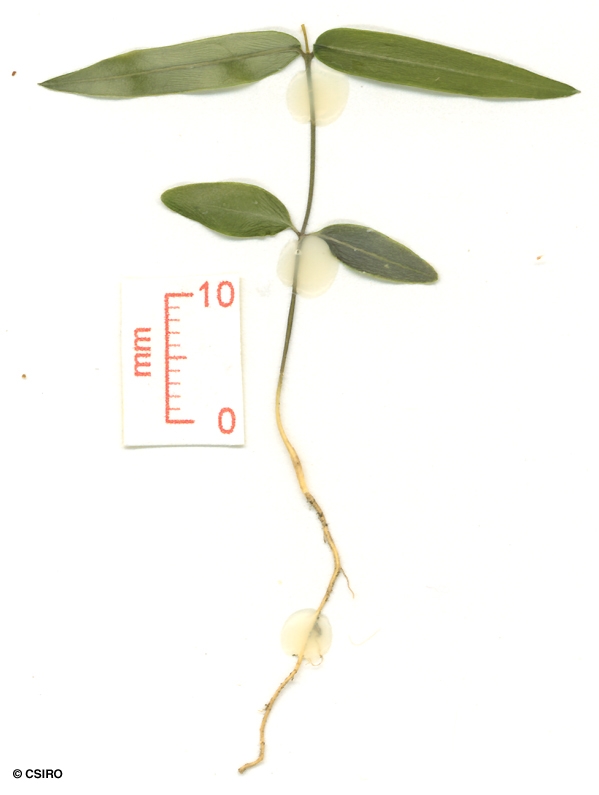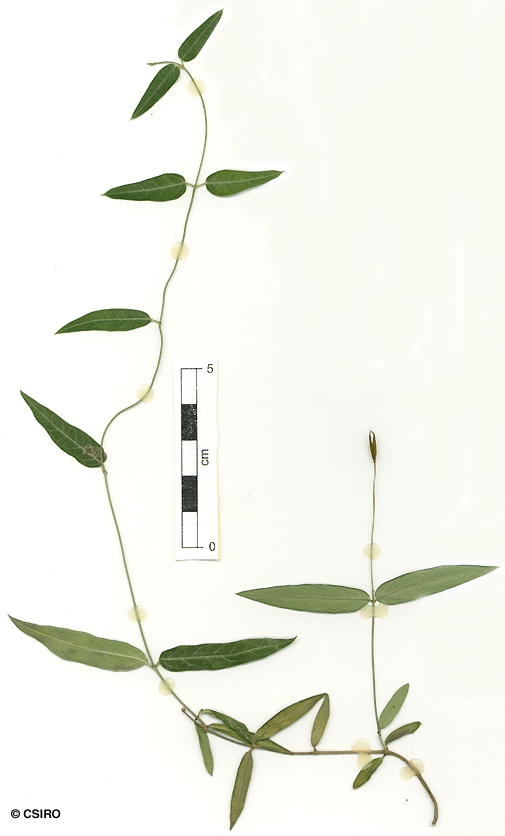Australian Tropical Rainforest Plants - Online edition
Parsonsia lanceolata R.Br.




Brown, R. (1810) Prodromus Florae Novae Hollandiae : 466. Type: Queensland, July - October 1802, R. Brown, holo: BM. Fide Williams (1996).
Rough Silkpod; Silkpod, Rough
A slender vine not exceeding a stem diameter of 2 cm.
Subulate glands less than 0.5 mm long visible on the twigs between the points of attachment of the petiole bases. Twigs and petioles produce a small amount of clear or pale brown or honey-coloured exudate. Leaf blades about 4-6 x 1.5-3 cm, much paler on the underside, petioles about 0.5-0.8 cm long. Lateral veins forming loops inside the blade margin. Hairs present on both the upper and lower leaf blade surfaces but small, pale and difficult to discern without the use of a lens.
Inflorescence compact, containing 10-50 flowers. Pedicels about 1-4 mm long. Calyx lobes narrowly lanceolate, about 1.5-2.5 mm long. Corolla tube about 1-1.5 mm long, lobes erect, ovate-lanceolate, about 3-4 mm long. Anthers fused together to form a cone about 2.5-3 mm long surrounding the stigma, each anther sac ending in a long tail at the base. Pollen produced only in the upper half of each anther. Staminal filaments free from one another at the base but fused further up and then free from one another before joining with each anther.
Fruits about 7-12 x 0.6-0.7 cm, surface clothed in short hairs. Seeds numerous, each about 8-10 mm long. Plumes white, about 18-30 mm long. Embryo about 5 mm long. Cotyledons about 3.5 mm long, radicle about 1.5 mm long.
Cotyledons elliptic to almost lanceolate, about 10-13.5 x 3-5 mm, midrib but no other veins visible. First leaves lanceolate, apex acute with an elongated apiculate tip, base obtuse. Midrib slightly depressed or flush with the upper surface. Leaf blades almost glabrous except for small sparsely scattered hairs along the midrib on both the upper and lower surfaces. Petioles +/- parallel to the stem and the leaf blades held at right angles to the petioles. At the tenth leaf stage: leaf blade lanceolate, apex acute to acuminate, base obtuse. Lateral veins about 5-7 on each side of the midrib. Stipule-like glands, about 0.3 mm long, present on the stems between petiole bases and the stem. Seed germination time 21 days.
Occurs in NEQ, CEQ and southwards as far as southern New South Wales. Altitudinal range in NEQ from 350-900 m. In NEQ confined to monsoon forest or vine thickets.
Food plant for the larval stages of the Common Crow Butterfly. Sankowsky & Neilsen (2000).





